三代 徳田 八十吉/Tokuda Yasokichi
石川県にて代々受け継がれている九谷焼の陶工の三代目、徳田八十吉(本名・徳田正彦)は、重要無形文化財「彩釉磁器」の保持者(人間国宝)に認定されている陶芸家です。
三代八十吉は1933年、石川県能美郡小松町字大文字町(現・小松市大文字町)にて、二代八十吉(本名・徳田外次)の長男として生まれました。金沢美術工芸短期大学陶磁科を中退後、二代八十吉の指導のもとで絵付け技術を学び、1955年に祖父である初代八十吉が病に倒れてからは、上絵釉薬の調合を任されるようになりました。日展に9回連続で落選するなど日の目を見ない時期も続きましたが、1963年の第6回日展に出品した器【あけぼの】で念願の入選を果たし、1969年に独立すると、小松市桜木町に構えた自身の工房で、電気窯を用いた制作を始めました。この電気窯の1000度を超える高温焼成と、緻密な研究や試行錯誤を経て生み出した200色以上の中間色によって、美しいグラデーションを特徴とする作品を作りあげます。それは、古九谷、吉田屋の作風を再現した上絵付けの名人である初代とも、伝統継承と技法革新に尽力した二代とも異なる、三代独自の作風の確立でした。海外でも高く評価されたこの技術は、三代自身によって「燿彩(ようさい)」と命名されています。第18回日本伝統工芸展にてNHK会長賞を受賞した【彩釉鉢】(1971年)や、第24回日本伝統工芸展にて日本工芸会総裁賞を受賞した【燿彩鉢】(1977年)は、いずれもほのぼのと夜が明けていくような輝きを放ち、「燿彩」の始まりを告げています。
三代八十吉が、この多彩な色合いとともにこだわりを見せたのは造形です。燿彩壺【恒河】(2003年)は、文化勲章受章者の蒔絵師、松田権六(1896〜1986)に「用」がないとの批判をこめて「火薬玉」と酷評された作品ですが、「用」のかたちを残しつつも「使う」ことを目的とせず、アートとして飾ることのできる造形を追求、創出した功績は特筆すべきです。晩年には、素地に面取りを施し、新たな色の変化を展開していく作品を試みたほか、脳梗塞で倒れたのちに、自身の娘である四代八十吉(本名・徳田順子)に初代から続く一子相伝の釉薬調合の技「八十吉の色」を授けるなど、名工としての仕事を最後までまっとうしました。
Yasokichi Tokuda III (birth name: Tokuda Masahiko), the third-generation potter of Kutani ware, which has been passed down through generations in Ishikawa Prefecture, is recognized as a Living National Treasure for his achievement in “Saiyū Glazing porcelain” an Important Intangible Cultural Property.
Yasokichi III was born in 1933 in Daimonnji Town, Komatsu Town, Nomi District, Ishikawa Prefecture (now, Daimonji Town, Komatsu City), as the eldest son of Yasokichi II (birth name: Sotoji Tokuda). After dropping out of the Ceramic Arts and Crafts Department at Kanazawa College of Art, he learned painting techniques under Yasokichi II. After his grandfather, the first Yasokichi, fell ill in 1955, Yasokichi III took on the responsibility of blending overglaze enamels (pottery). Despite facing periods of obscurity, such as being rejected from the Japan Traditional Crafts Exhibition nine times in a row, his long-held wish finally came true when his piece “Akebono” was selected for the 6th Japan Traditional Crafts Exhibition in 1963. Upon becoming independent in 1969, he established his own studio in Sakuragi Town, Komatsu City, and began creating works using an electric kiln. Through firing at temperatures exceeding 1000 degrees Celsius in this electric kiln and rigorous research and trial and error, he developed over 200 intermediate colors, characterized by beautiful gradations. This established a unique style for the third generation, different from the styles of the first, a master of overglaze painting who reproduced the styles of Ko-Kutani and Yoshidayama, and the second, who devoted himself to traditional inheritance and technique innovation. This technique, highly acclaimed overseas as well, was named “Yosai” by Yasokichi III himself. Pieces such as the “Saiyū Bowl” which won the NHK Chairman’s Award at the 18th Japan Traditional Crafts Exhibition (1971), and the “Yosai Bowl” which won the Japan Kogei Association President’s Award at the 24th Japan Traditional Crafts Exhibition (1977), both emit a gentle glow reminiscent of dawn, marking the beginning of “Yosai”. Yasokichi III was particular about the design alongside this diverse array of colors.
The “Yosai vase: Koga” (2003) was criticized as a “firecracker” by lacquer artist and recipient of the Order of Culture, Gonroku Matsuda (1896-1986), for its lack of utility. However, its achievement in pursuing and creating a design that can be appreciated as art without the purpose of use, while retaining the essence of utility, should be noted. In his later years, he attempted to create works with new color variations by applying beveling to the base material. After suffering from a cerebral infarction, he fulfilled his duties as a master craftsman until the end, including passing down the family tradition of glaze formulation, known as “Yasokichi’s colors” to his daughter, Yasokichi IV (birth name: Junko Tokuda), who continues the tradition from the first generation.
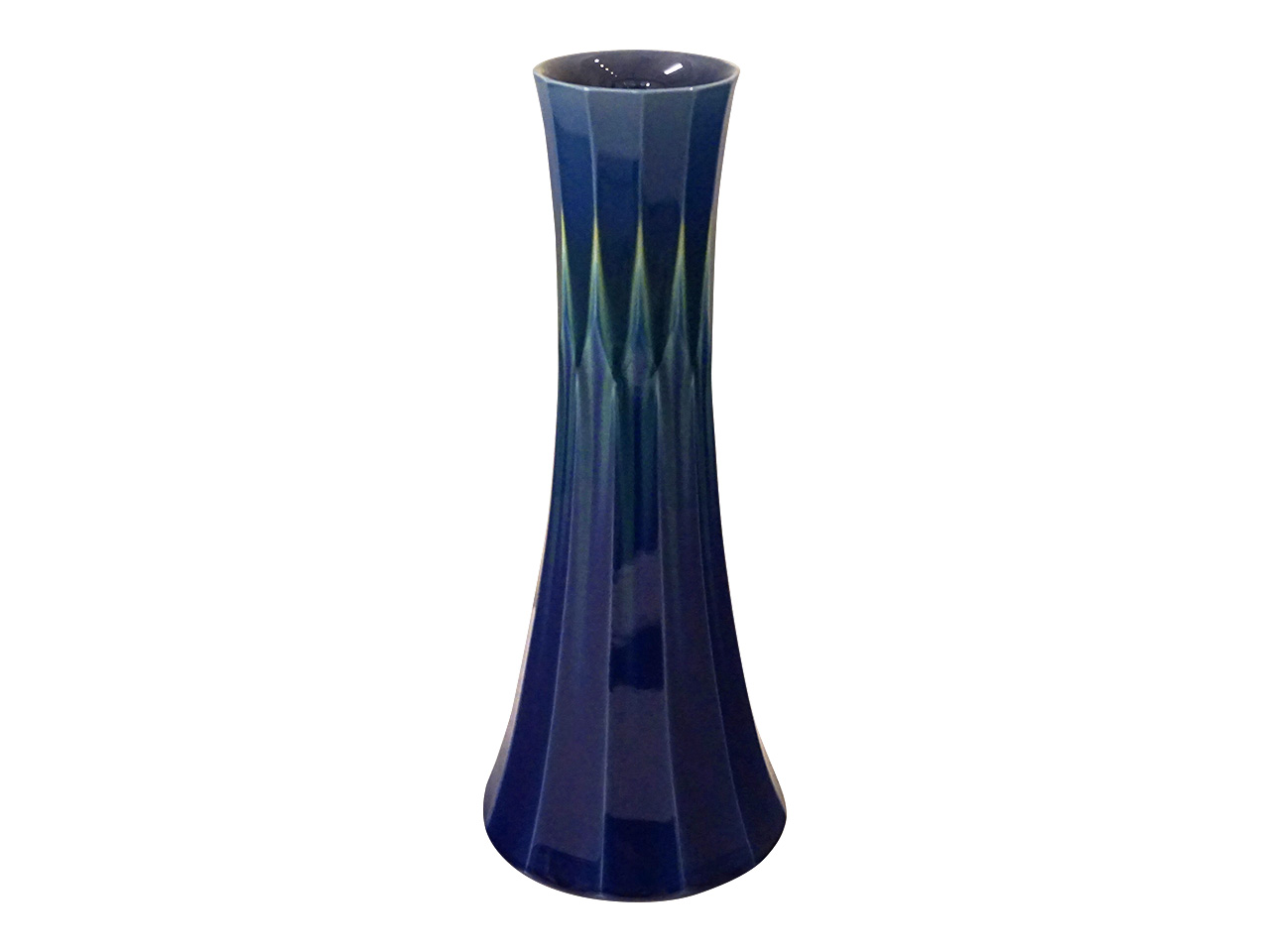
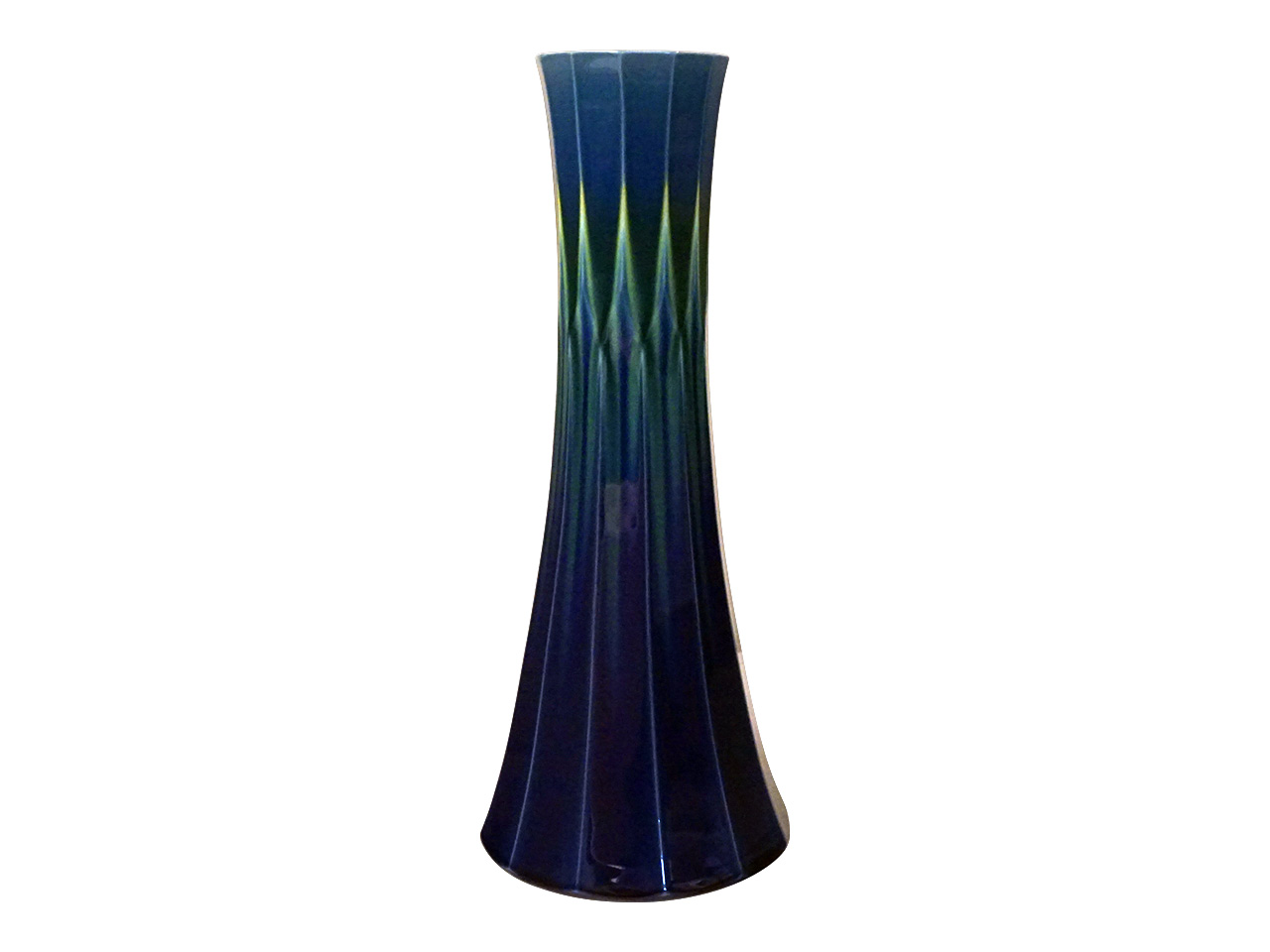

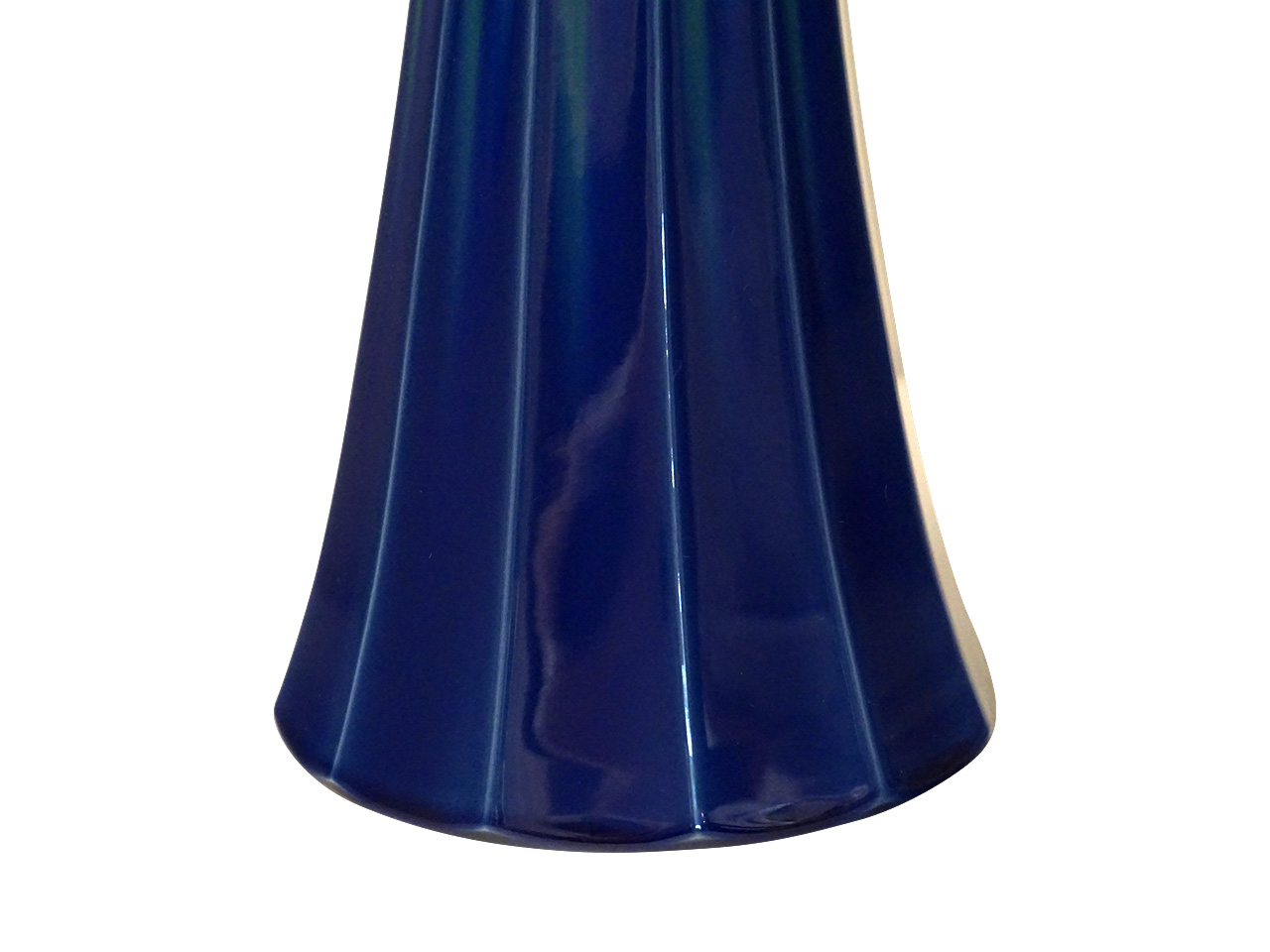
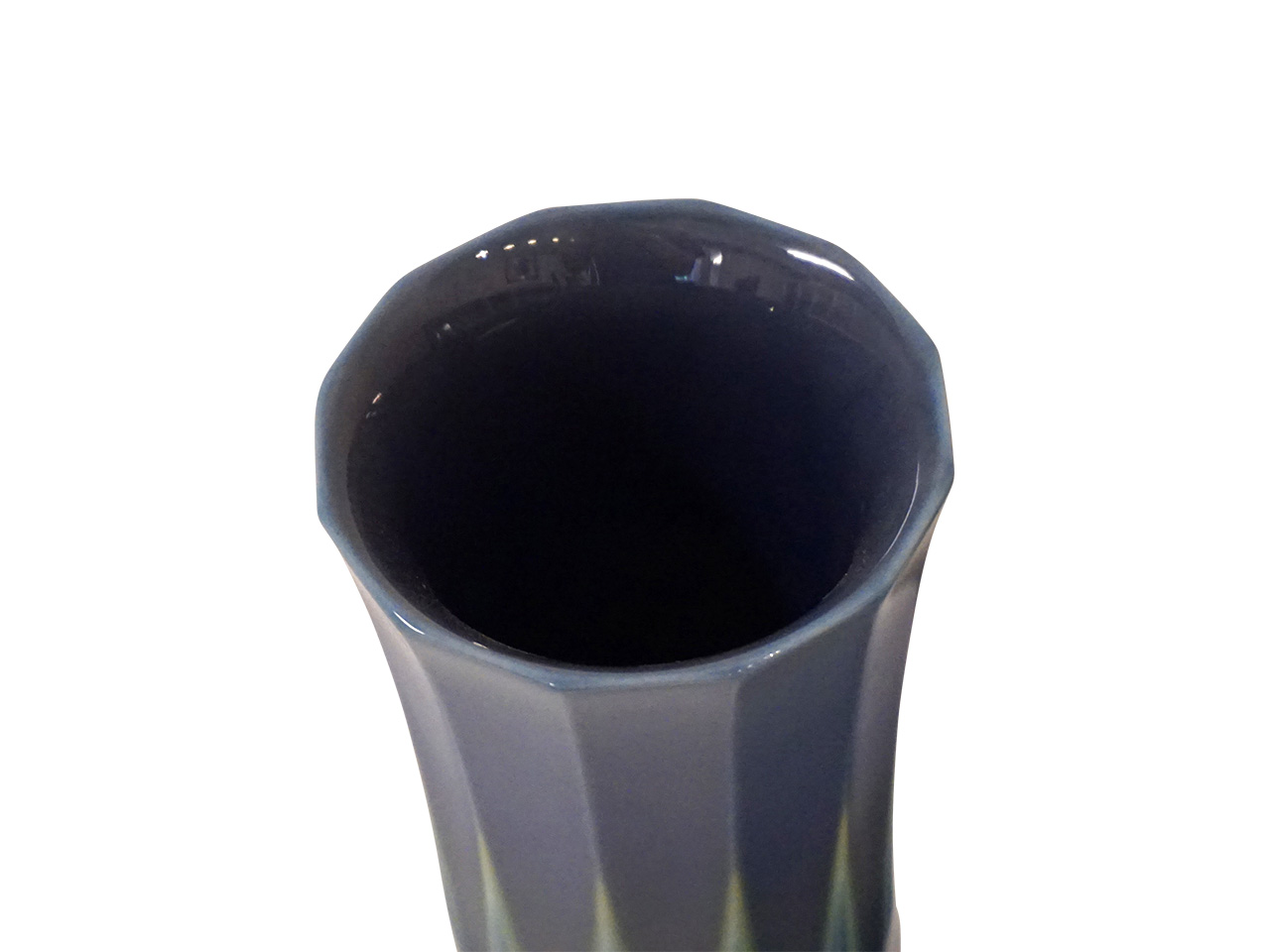

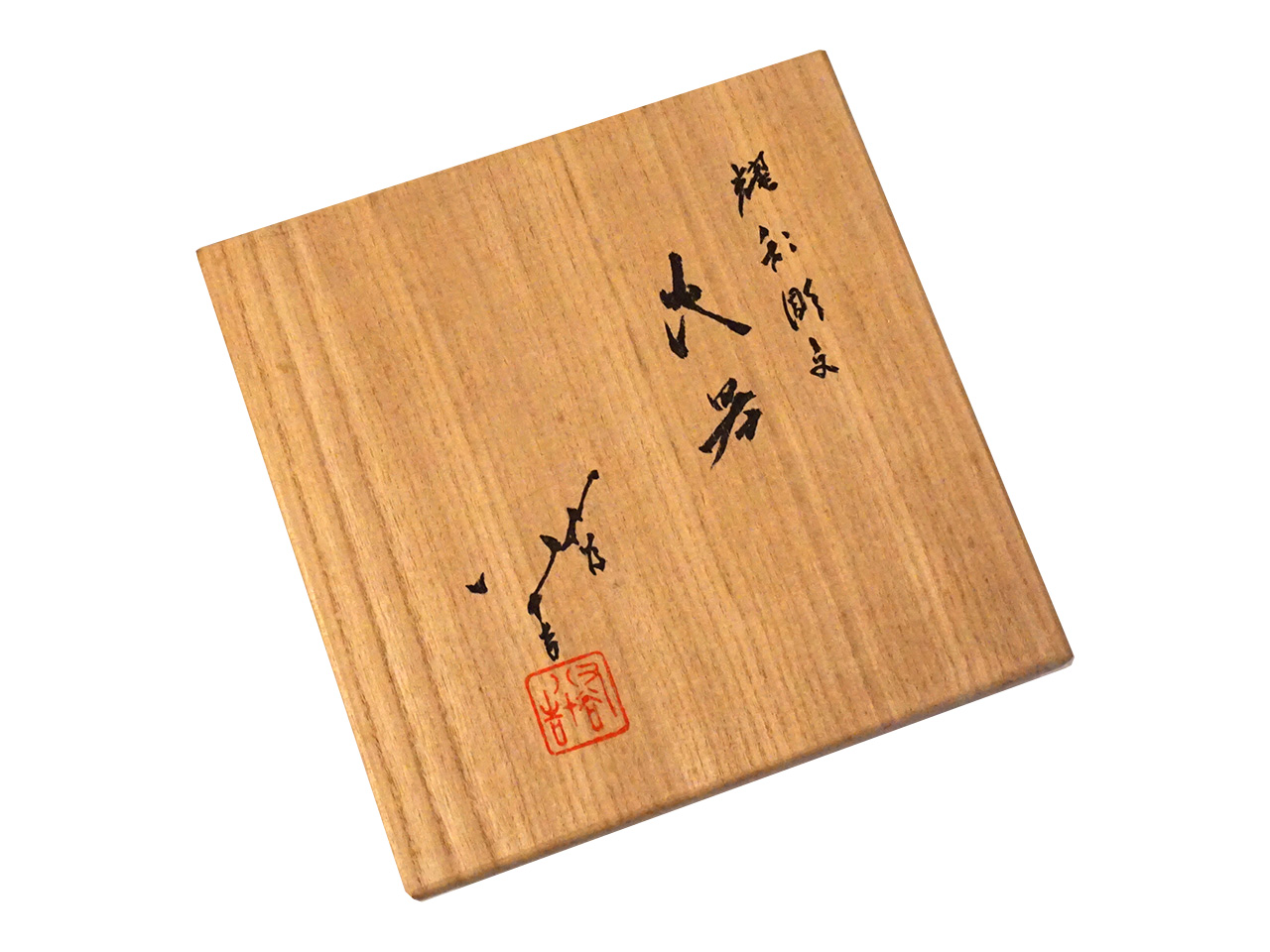
作品名:耀彩彫文花器
サイズ:H32cm
価格:SOLD OUT
価格は税抜き表示です

